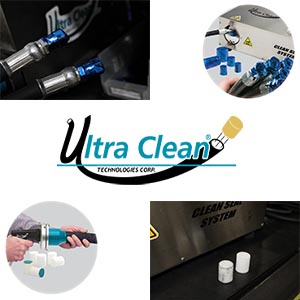Eliminating contamination in fluid piping systems is becoming more important. Particle contamination left behind from welding, cutting crimping, bending, and flaring can be eliminated with the proper cleaning process.
We work with our customers to determine the best cleaning processes to meet their expectations. We utilize the following products and methods to meet these requirements.
CLEANING
- Oxygen Service – Specifications
- ASTM G93 level ABC
Standard practice for cleaning methods and cleanliness levels for material and equipment used in oxygen-enriched environments. - CGA G 4.1
Describes the cleaning methods and requirements for equipment used in the production, storage, distribution, and use of liquid and gaseous oxygen to reduce the risk of fire, explosion, or promotion of combustion.
- ASTM G93 level ABC
- Ultra-Clean
 Hydraulics – Removes rubber dust and metal particles from the cutting process, metal flash from the crimping process, and contaminated oil from hoses, tubes, and pipes in hydraulic systems.
Hydraulics – Removes rubber dust and metal particles from the cutting process, metal flash from the crimping process, and contaminated oil from hoses, tubes, and pipes in hydraulic systems.- Pneumatics – Eliminates rubber contamination metal particles, contaminated oil, and moisture that causes breakdowns and inefficiency.
FINISHING
- Passivation
- A non-electrolytic finishing process that makes stainless steel more rust-resistant. This process typically uses nitric or citric acid to remove free iron from the surface. This results in an inert, protective oxide layer that is less likely to chemically react with air and cause corrosion.
- Annealing
- A heat treatment process which alters the microstructure of a material to change its mechanical or electrical properties. Typically, in steels, annealing is used to reduce hardness, increase ductility, and help eliminate internal stresses.
- Polishing
- Polishing is an important process for manufacturers and architectural applications. Polishing metal tubes creates a uniform and consistent surface finish – vital for manufacturers and OEM’s supplying products to the chemical and pharmaceutical industries.
PACKAGING
Proper packaging and capping are the final step, ensuring that the cleaned hose assembly stays that way during transport. Within this packaging we can also include certificates of performance and cleaning specifications.

